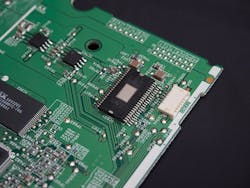We’re not prepared for the end of Moore’s Law
CAMBRIDGE, Mass., - Gordon Moore’s 1965 forecast that the number of components on an integrated circuit would double every year until it reached an astonishing 65,000 by 1975 is the greatest technological prediction of the last half-century. When it proved correct in 1975, he revised what has become known as Moore’s Law to a doubling of transistors on a chip every two years, writes David Rotman for the MIT Technology Review. Continue reading original article.
The Intelligent Aerospace take:
February 24, 2020-Rotman writes in excellent piece for the MIT Technology Review that Moore's Law was an economic one. With more transistors, the cheaper those transistors became. But, costs are rising as advanced chips become more expensive.
“It’s over. This year that became really clear,” says Charles Leiserson about Moore's Law. Leiserson is a a computer scientist at MIT and a pioneer of parallel computing, in which multiple calculations are performed simultaneously.
Rotman says that "The cost of a fab is rising at around 13% a year, and is expected to reach $16 billion or more by 2022. Not coincidentally, the number of companies with plans to make the next generation of chips has now shrunk to only three, down from eight in 2010 and 25 in 2002."
So, Moore's Law isn't necessarily slowing because of technical limitations. Rather, we may be reaching the point where the market is content to take a modular approach to computing solutions in the name of more economic solutions than fitting more transistors into increasingly cramped quarters.
Last year, AMD CTO Mark Papermaster wrote that "If the design approach anticipates modular architecture, then portions of the design that are difficult to manufacture can be parsed into small die sizes. With small die, we get increased yield and increased number of chips per wafer, which will help further reduce manufacturing costs and increase production efficiency."
Related: AMD turns to chiplets as Moore's Law slows
Related: Using multi-core processors effectively in aerospace and defense programs
Related: DARPA funding brings machine learning to BAE Systems’ Signals Intelligence capabilities
Jamie Whitney, Associate Editor
Intelligent Aerospace
